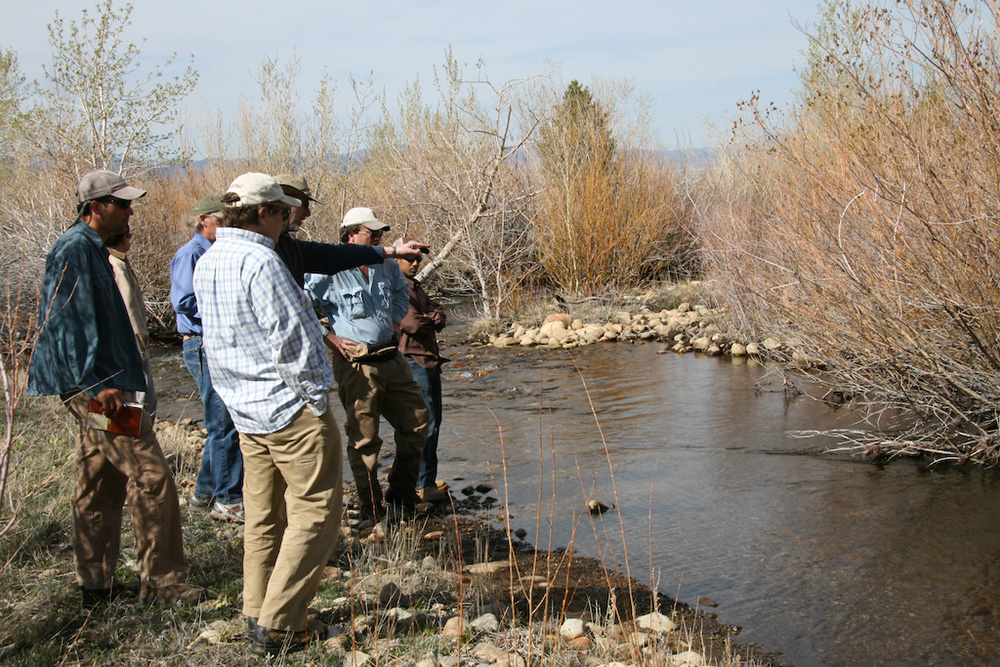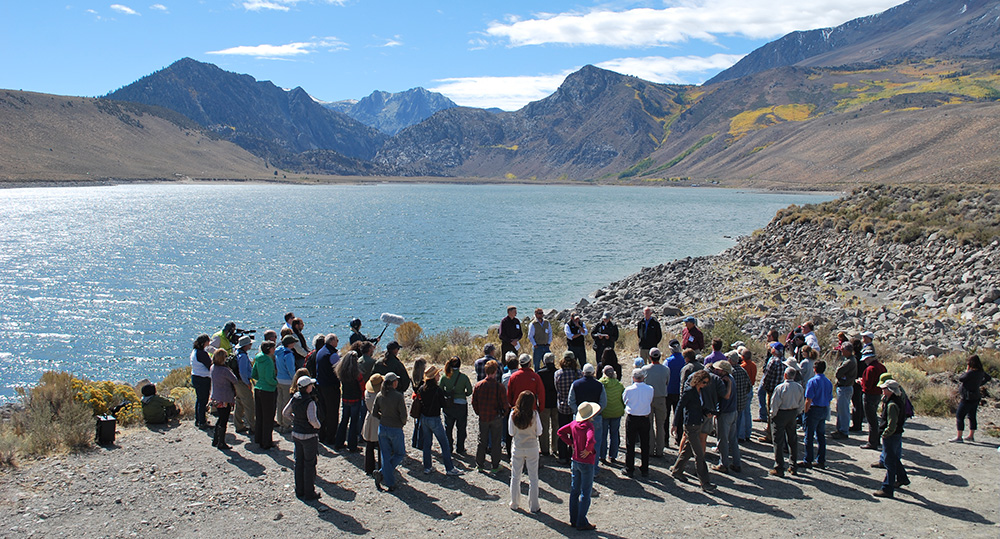
The effort to restore Mono Lake’s tributary streams is poised to reach new successes when the drawn-out process of authorizing new science-based streamflows and associated infrastructure improvements finally concludes.

While that date remains frustratingly uncertain, the Mono Lake Committee is advocating for immediate implementation of currently-feasible restoration measures to take place in 2019 while continuing to push for the rapid completion of the revision of the Los Angeles Department of Water & Power’s (DWP) license to divert water from the Mono Basin.
Why wait?
Twenty years ago the California State Water Resources Control Board charted a scientific study process led by two appointed expert Stream Scientists to determine the best way to achieve restoration goals with the water allocated to Mono Lake and its tributary streams. That study produced a major report in 2010 that described new flow regimes for Rush, Lee Vining, Parker, and Walker creeks designed specifically to activate the natural stream processes that build and support healthy ecosystems.
The State Water Board’s stream restoration program was designed to restore the creeks damaged by decades of excessive water diversions by DWP and is a requirement of its license to divert water from the streams.
For DWP some parts of the restoration plan require simple adjustments to the operation of the Los Angeles Aqueduct, but construction of a new outlet in the Grant Lake Dam is required to deliver the necessary high springtime flows to Rush Creek.
In 2013, after three years of intensive negotiations, the Committee, along with partners at the California Department of Fish & Wildlife and California Trout, entered into the Mono Basin Stream Restoration Agreement with DWP to implement the scientific recommendations, identify a feasible plan for the construction of the new outlet, and address monitoring and other important restoration matters.
The legal process of DWP’s license revision is moving agonizingly slowly, and six years later the package of restoration measures in the Agreement has yet to be implemented.

Feasible in 2019
The Committee is currently advocating for action in 2019 while the larger authorization process continues. Two elements of the Agreement are straightforward to implement.
First, new ecologically beneficial streamflow patterns can be implemented, in part, this year. Although high flows in Rush Creek can’t be achieved until the new outlet is constructed, the rest of the Rush Creek flow pattern can be delivered along with the new flow patterns for Lee Vining, Parker, and Walker creeks.
Second, monitoring Mono Lake’s health can be returned to the leadership of skilled scientists with limnology expertise. The Agreement includes this monitoring plan, resolving a significant dispute that originated when DWP used contracting procedures to displace the long-established scientific experts in favor of in-house staff. A simple contracting change at DWP can put this change into motion, significantly enhancing understanding of Mono Lake’s ecosystem.
Both of these items are under active discussion between the Agreement parties and the State Water Board, which has expressed concern about the slow pace of overall progress and support for moving the interim measures forward.
DWP has begun work on the approvals needed for interim implementation of the streamflows, and the Committee technical team is working with DWP to ensure data collection and continuity accuracy. DWP has yet to respond to the Mono Lake monitoring topic, and Committee staff are actively working on advancing it.
The pressure is on
Implementation of the full Stream Restoration Agreement remains a critical focus for the Committee. The State Water Board is waiting on just one thing: a supporting environmental document from DWP. Delivery of this document has been promised for years but has yet to happen. The State Water Board has recently expressed impatience about the protracted delays, and Committee attorneys and staff are working to prod quick delivery from DWP.
In the months ahead, with dedicated effort from Committee staff and support from Committee members, two goals can be achieved: progress on Agreement implementation and achievement of real on-the-ground actions that advance stream restoration in 2019.
This post was also published as an article in the Winter & Spring 2019 Mono Lake Newsletter (pages 3 and 24).
